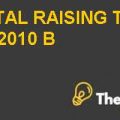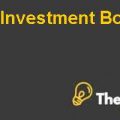
"Store 24"
1. Describe the process (that we followed during class) of conducting an industry analysis. What are the objectives / final output from this analysis?
There are several ways in which an industry analysis is conducted but the most commonly used and popular tools the porter five forces introduced by Michael Porter and the PEST analysis. The Porter Five forces assess the external micro environment in which the business operates. Whereas, PEST analysis takes a broader look at macro environment in which the business operates. The porter five forces are inclusive of five things namely, bargaining power of buyer, bargaining power of supplier, threat of new entrants, threat of substitutes and rivalry amongst existing firms (Brown, 2009). However, the PEST analysis includes the macro environmental variables such as political, social, economical and technological. All of them can impact the business in some way or the other restricting business’s ability to utilize its full capacity.
An understanding of where the power lies among the five forces the company can assess its strengths and weaknesses and before taking any decision. It helps the firm to understand its positioning and then take informed decision based on the above two descriptive analysis of the environmental factors (Brown, 2009). These analyses are used when the company plans a new product service or business to enter in and wants to know their profitability in specific circumstances.
The first force of the porter five forces is the bargaining power of supplier. Supplier is a person, who is responsible to get the company all the necessary raw material required to manufacture a product. Over here we assess that how easy it is for the suppliers in the industry to drive prices. The analyst in this section checks for the number of suppliers and their concentration in the industry, the USP of the product or service at disposal, the strength of the product itself and the switching costs of supplier (C.K. Prahalad 2003). Therefore, number of supplier is a true measure of this porter force.
The second porter force is bargaining power of buyer, which is derived from the number of buyers in the industry for that specific product or service. The factors that need to be analyzed are importance of each buyer to the industry, buyer switching costs and risks. If the number of buyers in the industry is few they drive prices according to their terms, whereas, if the buyers are high the buyer power is low (Michale, 2008).
The third force in the porter five forces is rivalry amongst existing firms. This is measured by the number of competitors in the industry who offer almost same products and services to the buyers in this industry. Therefore, if competition is high indicating a mature industry then the industry incumbents has little power over the prices (Michale, 2008). However, if the company has a product that is differentiated or is patented then that is a clear strength.
The fourth is the threat of substitutes which is measured through the comparison of the product itself, the existing substitute products in the market place and also the anticipated product of future (Brown, 2009). If peer product offering is better than yours then you clearly have no power here. However, if the product offering is unique and inimitable then one holds power in this force whereas if the substitute is easily available then one doesn’t stand anywhere (Robert, 2000)..
The last of all forces is the threat of new entrants, measured by the industry’s capacity and ability to get new entrants into the market. For example capital intensive industry is not easy to get into due to large investments (C.K. Prahalad 2003). The factors through which this force is calculated include barriers to entry, investment range, economies of scale, patents and other copy rights help existing companies in sustaining competition from the new entrants. However, a lack of such factors brings the companies in a weaker position hence rising thereat form the new entrants.
In essence the porter five forces are a measure of business viability in an industry. All of these five forces impact competition. The supplier power helps dive prices of products up in competition, whereas the buyer power helps prices go down (Robert, 2000). The threat of substitution is high when substitute product availability and for new entrants the threat is high when the industry is least subject to barriers whether patent or investment (Michale, 2008). And last but not the higher the rivalry the more the competition is fierce and the environment is not in favor of the companies. Therefore to have balance it is good to conduct an industry analyses before taking any decisions as it helps companies get the feel of the environment in which they are operating and also in making decisions in a more timely and informed fashion (Robert, 2000)..
The second is the PEST analysis which is used most widely for conducting the environmental analysis at the macro level. The PEST involves the .........................
This is just a sample partial case solution. Please place the order on the website to order your own originally done case solution.













